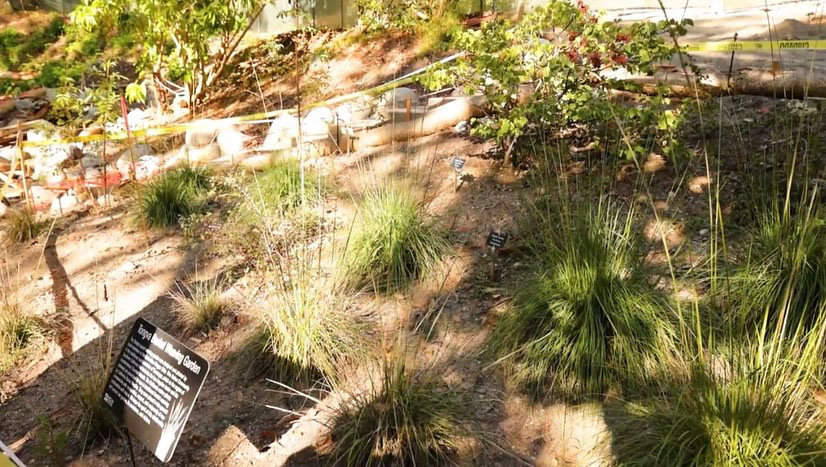Native American Heritage Month, observed in November, is an occasion to honor the diverse cultures, histories, traditions, contributions, and achievements of the nation’s original inhabitants and their descendants. As a public university located on the ancestral land of the Gabrielino/Tongva peoples, the original caretakers of the Los Angeles Basin, UCLA is committed to connecting its past to its future. This includes the care of UCLA’s landscapes and natural areas.
Incorporating traditional ecological knowledge is a guiding principle in the UCLA Landscape Plan. Objectives include:
- Promoting tribal land caretaking
- Incorporating indigenous practices into campus maintenance practices to help fulfill sustainability goals and reduce maintenance costs
- Incorporating native plants and water systems more on campus
- Working with Indigenous student groups to build up landscape programming and Indigenous cultural events.
These efforts build on an agreement between university officials and members of the Gabrielino Tongva tribe to ensure that traditional ways of planting, harvesting, and gathering became part of campus landscaping and caretaking practices moving forward.
The understanding developed and co-written by Mishuana Goeman, a former special advisor on Native and Indigenous Affairs to UCLA Chancellor Gene Block, aligns with goals of the Sustainability Plan.
Within the equity, diversity, inclusion, and justice section of the plan, is an objective to continue to develop land-based opportunities with the Gabrielino Tongva and Fernandeño Tataviam Band of Mission Indians. Embracing these traditional caretaking practices is part of advancing this goal.
The partnership signed last fall also included provisions related to Sage Hill, UCLA’s native plant and wildlife habitat covering three acres in the northwest corner of campus.
UCLA is also honoring the First Peoples through a Gabrielino Tongva tribe designed and planted basket weaving garden nestled in UCLA’s Mildred E. Mathias Botanical Garden. The area is home to 15 types of native plants used for basket weaving, with each species identified by signage bearing their names drawn from the Tongva language, when possible, along with their common names and Latin names.
The First Peoples of Los Angeles lived in community and with the Earth with relational reciprocity and respect — a way of life worthy of modeling. As Robin Wall Kimmerer wrote in Braiding Sweetgrass, “For all of us, becoming indigenous to a place means living as if your children’s future mattered, to take care of the land as if our lives, both material and spiritual, depended on it.”
For additional resources to support our Native American and Indigenous communities at UCLA, check out the Equity, Diversity and Inclusion office’s toolkit.
